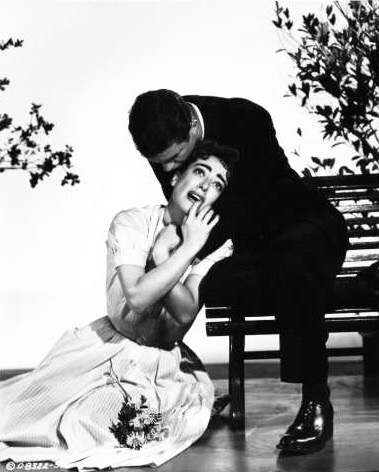 For many people the Christmas holidays wouldn’t be complete without a viewing of It’s a Wonderful Life or Miracle on 34th Street or some version of Charles Dickens’ A Christmas Carol whether it features Reginald Owen, Alastair Sims, Mr. Magoo or Bill Murray. But there’s no reason why Preston Sturges’ Christmas in July (1940) shouldn’t become an annual seasonal favorite as well. Granted, it doesn’t take place in December, contains no wintry, snow-covered landscapes or appearances by Santa Claus but like the Frank Capra and Charles Dickens favorites it conveys the spirit of Christmas, one of selfless giving and generosity to those less fortunate than you. It also reaffirms the importance of family and friends over the materialistic traps of the world but accomplishes it with wit and high style in a breathlessly paced sixty-seven minute rollercoaster ride. Continue reading
For many people the Christmas holidays wouldn’t be complete without a viewing of It’s a Wonderful Life or Miracle on 34th Street or some version of Charles Dickens’ A Christmas Carol whether it features Reginald Owen, Alastair Sims, Mr. Magoo or Bill Murray. But there’s no reason why Preston Sturges’ Christmas in July (1940) shouldn’t become an annual seasonal favorite as well. Granted, it doesn’t take place in December, contains no wintry, snow-covered landscapes or appearances by Santa Claus but like the Frank Capra and Charles Dickens favorites it conveys the spirit of Christmas, one of selfless giving and generosity to those less fortunate than you. It also reaffirms the importance of family and friends over the materialistic traps of the world but accomplishes it with wit and high style in a breathlessly paced sixty-seven minute rollercoaster ride. Continue reading
Tag Archives: Donald Spoto
Martyrdom, Italian Style
The second film collaboration between Ingrid Bergman and Roberto Rossellini, Europe ’51 (1952) might be the most overlooked and misunderstood feature of the famous director-actress team during their turbulent and controversial relationship. Between 1950 and 1955, the couple made five features together and one episode for the five chapter compilation film, We, the Women (1953). Although most film critics seem to regard 1954’s Journey to Italy as their peak achievement, Europe ’51 (aka Europa ’51) received a second chance at reappraisal in September 2013, thanks to The Criterion Collection, which released the film on Blu-Ray and DVD in a set with Stromboli (the first Bergman-Rossellini film from 1950) and Journey to Italy (aka Viaggio in Italia, 1953) . Continue reading
Love Hurts
In 1956 directed Robert Aldrich surprised everyone by trying his hand at a “woman’s picture,” a melodramatic soap opera that on the surface appeared to be a complete departure from his previous work which included two westerns (Apache, Vera Cruz), a film noir (Kiss Me Deadly) and a drama (The Big Knife), whose emotional volatility equals the physical violence in the three preceding films. Continue reading


